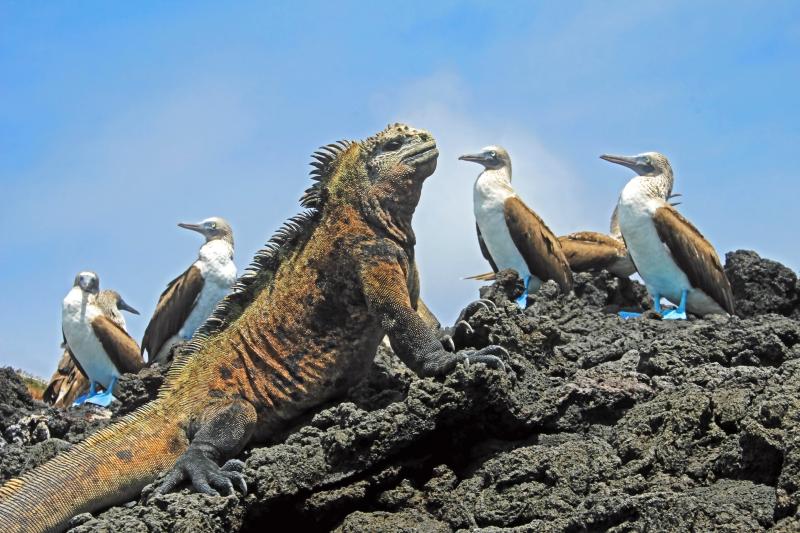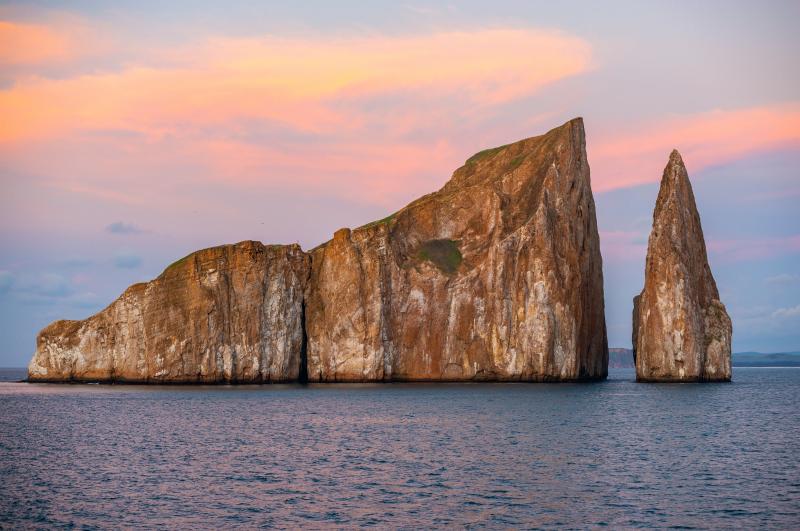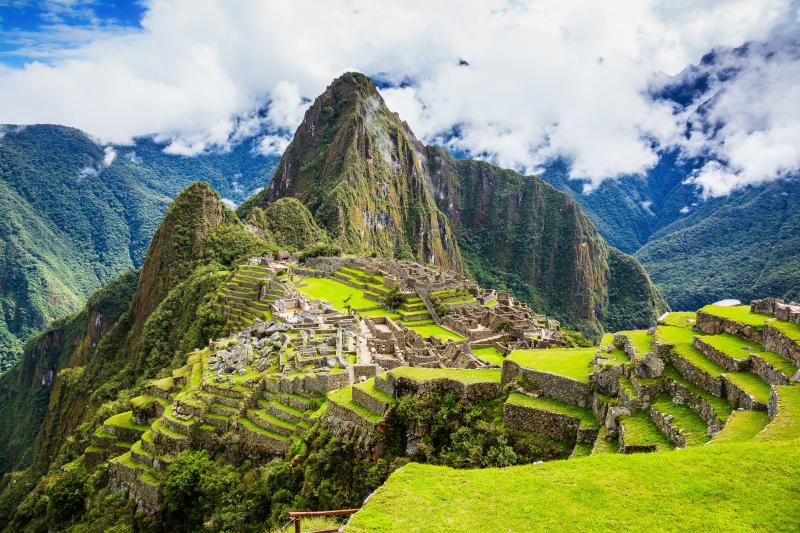View It
Visit It
Galapagos Islands
South America
Visit Galapagos Islands
The Galapagos Islands, an archipelago of volcanic islands distributed on either side of the equator in the Pacific Ocean, offer one of the most unique and exhilarating natural environments on the planet. Located about 906 kilometers west of continental Ecuador, the islands are renowned for their vast number of endemic species, which were studied by Charles Darwin during the voyage of the Beagle. His observations and collections contributed to the inception of Darwin's theory of evolution by means of natural selection.
Visiting the Galapagos Islands is like stepping into a nature documentary. Each island boasts its own unique landscape, ranging from barren black, volcanic rocks to white sandy beaches melting into crystal-clear waters. The islands are home to some of the most fascinating wildlife in the world, including the famous Galapagos tortoises, playful sea lions, and the magnificent frigatebirds. The waters around the islands are just as lively, featuring a spectacular array of marine life like sharks, rays, and colorful schools of fish, making it a world-class destination for snorkelers and divers.
Travel to the Galapagos is carefully controlled and visitors must adhere to strict guidelines to minimize environmental impact, which includes traveling with certified naturalist guides. The islands offer a variety of experiences from hiking on active volcanoes, kayaking alongside mangroves, snorkeling with exotic marine life, to simply observing the unique behaviors of wildlife from a respectful distance. Whether you're a nature enthusiast, an adventure seeker, or a science lover, a trip to the Galapagos Islands is an unforgettable journey into one of the most pristine and biologically important places on earth.
Galapagos Islands Monthly Weather Conditions
LOW
TEMP
HIGH
TEMP
DAYS OF PRECIP.
January
70°F
76°F
12
February
70°F
84°F
12
March
70°F
82°F
12
April
68°F
77°F
12
May
68°F
76°F
12
June
68°F
76°F
12
July
68°F
76°F
1
August
68°F
76°F
2
September
66°F
76°F
12
October
68°F
77°F
12
November
68°F
76°F
12
December
70°F
76°F
12
Need to Know Before You Go To Galapagos Islands
Find your Next Adventure in Galapagos Islands
Explore Galapagos Islands
- Unique Wildlife
The Galápagos Islands are home to many unique species that are found nowhere else on Earth, such as the giant Galápagos tortoises, marine iguanas, and the flightless cormorant. The isolation of the islands has led to the development of unusual animal life that inspired Charles Darwin’s theory of evolution.
- Darwin’s Inspiration
Charles Darwin visited the Galápagos Islands in 1835 aboard the HMS Beagle. His observations of Galápagos species later influenced his formulation of the theory of evolution by natural selection.
- Volcanic Origins
The islands are formed from volcanic activity, and they are considered one of the most active volcanic areas in the world. The youngest islands, Isabela and Fernandina, are still being formed with recent volcanic eruptions.
- World Heritage Site
In 1978, UNESCO designated the Galápagos Islands as a World Heritage Site in recognition of their outstanding natural value for science and conservation.
- Giant Tortoises
The Galápagos giant tortoises can weigh over 500 pounds and live more than 100 years. They are among the most famous residents of the islands.
- Restricted Tourism
To protect the delicate ecosystem of the islands, the number of tourists allowed to visit each year is restricted. Visitors must also be accompanied by a certified Galápagos National Park guide.
- No Natural Predators
Many of the species on the Galápagos Islands evolved without natural predators, which is why some animals like the Galápagos sea lions and marine iguanas are remarkably tame around humans.
- Named After Tortoises
The name 'Galápagos' comes from the old Spanish word for "saddle," which refers to the shape of the giant tortoises’ shells.
- Unique Marine Ecosystem
The Galápagos Islands are surrounded by the Galápagos Marine Reserve, one of the largest marine reserves in the world, which is home to a diverse range of marine life including sharks, whales, and rays.
- Post Office Bay
On Floreana Island, there is an old wooden barrel that has been used as a makeshift post office since the 18th century. Whalers and other seafarers originally placed letters in it, hoping they would be picked up and delivered by ships heading home. This tradition continues today with tourists.
Featured Picture Gallery

The Galapagos Marine Iguana is Only Found in the Galapagos Islands

Galapagos Fur Seal is Native to the Island

Kicker Rock was Formed by Volcano Eruptions

The Galapagos Islands are Home to Countless Species of Wildlife
Explore Similar Locations
Machu Picchu

Tanzania

Patagonia

Costa Rica

